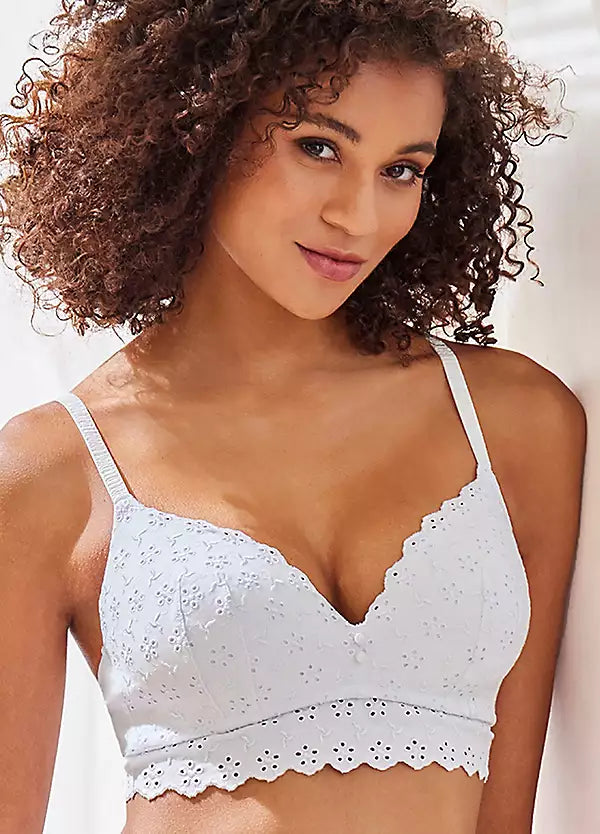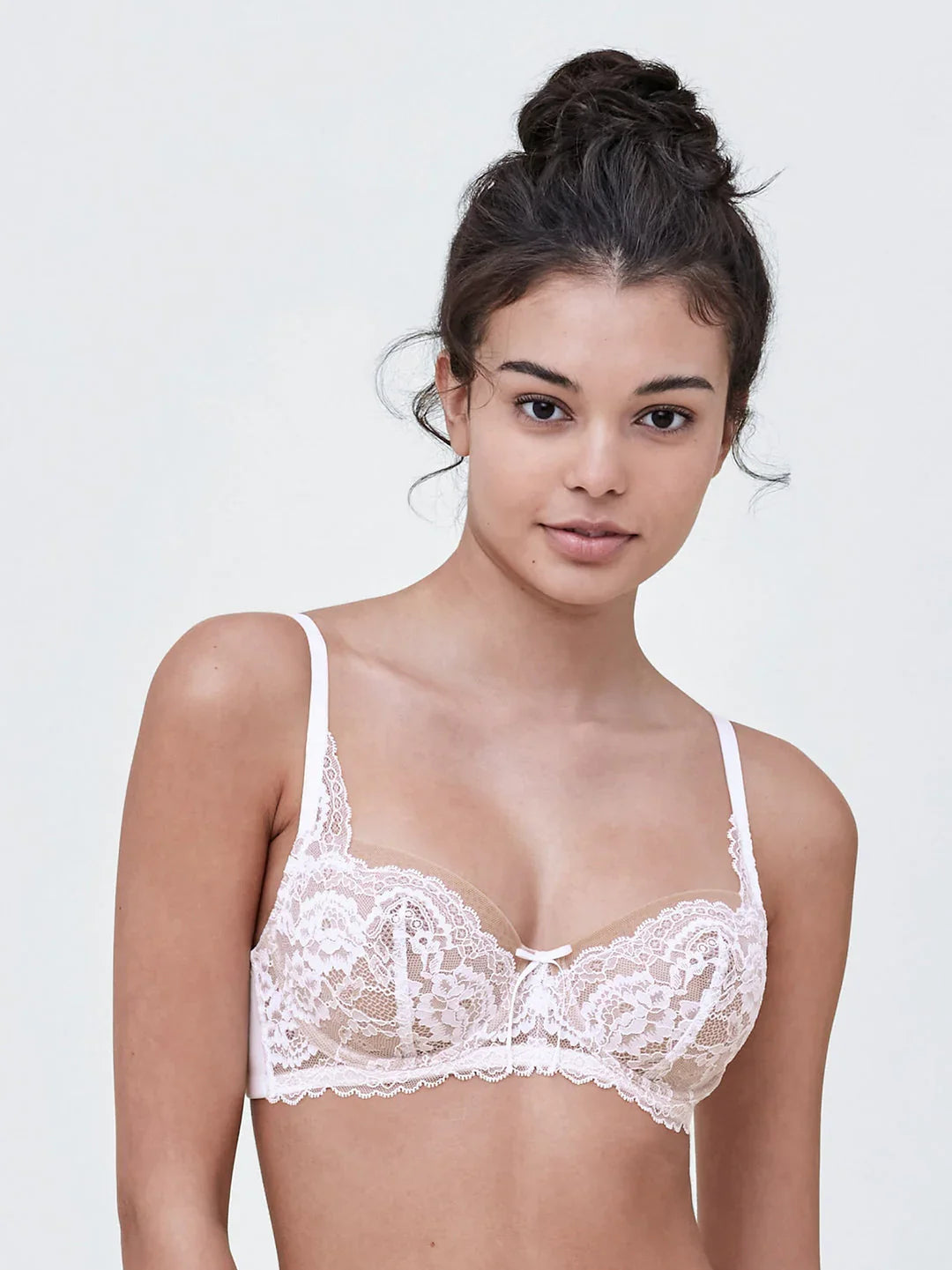How to Fix Loose Bra Straps Once and For All

Frustrated with loose bra straps? You’re not alone. This guide will explain why your bra straps keep falling and how to fix them for good.
Key Takeaways
-
Loose bra straps often result from wearing the wrong size, worn-out bras, or specific body shapes like narrow shoulders.
-
Proper adjustment and regular maintenance of bra straps can prevent bra straps from slipping and ensure comfort throughout the day.
-
Choosing the right bra style, like T-back or multiway bras, tighten bra straps and knowing when to replace your bras are key for optimal support.
Common Causes of Loose Bra Straps

One of the primary culprits behind loose bra straps is wearing the wrong bra size. When the underbust band or cup size is too large, the straps don’t stay up as they should. This is because a larger band increases the distance between the shoulder straps, making them more prone to slipping. Finding the correct bra size ensures that the straps fit snugly and securely on your shoulders, preventing a loose bra strap.
Another common cause of bra straps falling is worn-out bras. As bras age, they lose their elasticity, causing the straps to loosen and bra straps slip more frequently. This loss of elasticity can be exacerbated by improper washing techniques or simply the passage of time. If you find your straps slipping more often, it might be a sign that your straps keep falling and you need a new bra. Additionally, worn-out bras can cause bra straps loosen, leading to further discomfort.
Lastly, consider your body type. Women with narrow or sloped shoulders often experience issues with bra straps falling off, with the feeling of slipping off your shoulders being a common complaint. The width and placement of the straps play a significant role in how well they stay in place. Understanding these common causes can help you pinpoint the root of your strap issues and take steps to fix them.
How to Properly Adjust Bra Straps

Adjusting your bra straps properly is key to preventing them from slipping. To tighten a loose strap, pull the front part of the strap towards the bra cups while holding the slide adjuster in place. This increases the tension and ensures the strap remains snug on your shoulder. Conversely, to loosen a strap, hold the slide adjuster and pull the back part of the strap away from it. If the strap has been tightened, it will provide better support and keep it tighter.
Regularly checking and readjusting your bra straps, especially after washing, helps maintain the right tension. Here are some tips:
-
The slide adjusters can shift during the washing process, causing the straps to loosen.
-
Make it a habit to readjust the straps after every wash to maintain the right tension.
-
If the slide adjuster can’t move all the way along the strap, you may need to shorten the strap overall for a better fit.
Testing the fit is also crucial. Ensure that:
-
The straps lie flat against your body.
-
The straps keep tension without digging into your skin.
-
Two fingers should fit snugly between the strap and your skin as a good rule of thumb.
Remember, it’s completely normal for one strap to require a different length than the other due to asymmetrical breast sizes. By following these steps, you can keep your bra straps properly adjusted and in place.
Signs You’re Wearing the Wrong Bra Size
Wearing the wrong bra size often leads to loose bra straps. If the cups of your bra are too big, it can cause gaping, which in turn leads to strap slippage. This is a clear sign that you need to reassess your cup size and find a better fit. On the other hand, if the band size is too large, it won’t provide the necessary support, causing the straps to fall off your shoulders.
Key points about bra fit:
-
The band of the bra should hold the majority of the support, not the straps.
-
Constantly tightening the straps to keep the bra in place likely indicates an incorrect band size.
-
A larger back band increases the distance between shoulder straps, which can cause slippage.
-
The band should fit snugly without being too tight for a proper fit.
An incorrect bra size results in discomfort and ineffective support. You might experience breasts spilling out at the top or sides, or the bra digging into your skin. These are all signs that you need to find the right size for your body.
Addressing these issues will help you achieve a perfect fit and the support you need.
Best Bra Styles to Prevent Strap Slippage

Choosing the right bra style can make a significant difference in preventing strap slippage. Women with narrow or sloped shoulders benefit from T-back or racerback bras. These styles keep the straps closer together, reducing the likelihood of slippage. Convertible straps bras with crisscrossing straps also offer a versatile solution to this common issue for those with sloping shoulders.
Multiway bras, which can be converted into different styles like a racerback bra, are especially beneficial for those with narrow shoulders. Also, bras with a j-hook feature allow you to adjust the strap placement, helping to keep them in place. These adjustable options provide flexibility and a customized fit for various body shapes.
Women with larger breasts typically need wider straps to better distribute the weight and minimize slipping. Many women find that bras with wide, padded straps are designed to stay in place and offer extra comfort. For example, the MagicLift Seamless Support T-Shirt Bra includes these features and adjusts in the back to prevent slippage, unlike flimsy bra straps.
Lastly, consider bras with no-slip straps that feature a narrower placement on the back. These designs ensure that the straps remain securely on your shoulders throughout the day, allowing you to slip off your shoulders the worry of constant adjustments. These style bra styles offer a snug fit, eliminating the need for constant readjustments, especially when they come with adjustable straps.
How to Maintain Bra Elasticity

Keeping your bra’s elasticity intact is crucial for maintaining strap placement and overall support. Proper washing techniques help preserve the elasticity of bras. Always wash your bras in cold water on a gentle cycle to prevent damage to the elastic fibers. A gentle, bleach- and alcohol-free detergent helps maintain the fabric’s integrity.
To properly care for your bras during washing:
-
Fasten the bra clasps before washing to protect the fabric and prevent tangling.
-
Place your bras in a lingerie bag to help preserve their shape and fabric quality during the wash cycle.
-
Avoid using the dryer because the heat can damage the elasticity and underwire.
-
Air dry your bras instead to extend their lifespan.
Rotate your bras and avoid wearing the same one every day to help maintain their shape and elasticity. Adjusting the straps after washing helps maintain the right tension and fit. By following these tips, you can keep your bras in excellent condition and enjoy long-lasting support.
When to Replace Your Bra

Knowing when to replace your bra is key for maintaining support and comfort. If the bra band has lost its elasticity, it’s time for a new bra. The band is essential for providing the majority of the support, and once it loses its stretch, the bra can no longer do its job effectively. Look for signs of visible wear, such as fading or stains, which also indicate that it’s time for a replacement.
The typical lifespan of a bra is about six months before it begins to lose its elasticity. Regularly checking your bras for signs of wear and understanding their lifespan helps ensure you always have the support you need. Don’t wait until the bra is completely worn out; replace it as soon as you notice a decline in its performance.
Proper support and comfort are essential for daily activities and overall well-being. A well-fitting bra enhances your posture and confidence. Replacing your bras regularly ensures you always have a reliable foundation garment that meets your needs.
Personalized Fitting Services
Finding the perfect bra fit can be challenging, but personalized fitting services make a significant difference. Size guides and personal fittings with a fit specialist are excellent options for determining your correct bra size. These services eliminate the guesswork in bra shopping and ensure a perfect fit.
Some boutiques offer virtual bra fitting appointments for added convenience. These personalized services can be especially helpful for women with asymmetrical breasts, ensuring a proper fit tailored to your unique body shape. The Symmetrista size bra calculator is another useful tool that can help you find the right bra size accurately. A bra specialist can assist you in this process as well.
The correct size is crucial for comfort and support. A proper fitting right size bra boosts confidence and provides essential support for daily activities. Whether you choose an in-person fitting or a virtual appointment, finding your perfect fit and ensuring your bra fits properly is well worth the effort.
Summary
In summary, loose bra straps can be a thing of the past with the right knowledge and adjustments. From understanding the common causes to choosing the best bra styles and maintaining elasticity, we’ve covered all the bases. Regularly checking your bra size and replacing worn-out bras are essential steps in ensuring a comfortable and supportive fit.
Don’t let loose bra straps hold you back. Take action today to find your perfect fit and enjoy the confidence and comfort that come with a well-fitting bra. Your shoulders (and sanity) will thank you!
Frequently Asked Questions
Why do my bra straps keep falling off my shoulders?
It sounds like your bra straps might not be the right fit for you. Check your sizing, consider getting a new bra if yours are worn out, and try adjusting the straps to sit tighter on your shoulders to keep them in place.
How can I properly adjust my bra straps?
To properly adjust your bra straps, pull the front part towards the cups to tighten and hold the slide adjuster while pulling the back part away to loosen. This way, you’ll get the perfect fit for comfort and support!
What are the signs that I'm wearing the wrong bra size?
You're probably wearing the wrong bra size if you notice gaping cups, a band that's too loose, or if your breasts are spilling out. Remember, the band should support you, not just the straps!
What bra styles are best for preventing strap slippage?
To keep your bra straps in place, go for T-back, racerback, or convertible styles. Wide straps and those with a j-hook feature can also help eliminate slippage.
How often should I replace my bra?
You should generally replace your bra every six months, especially if you notice the band losing elasticity or see visible signs of wear like fading or stains. Keeping it in good shape ensures the best support and comfort!


